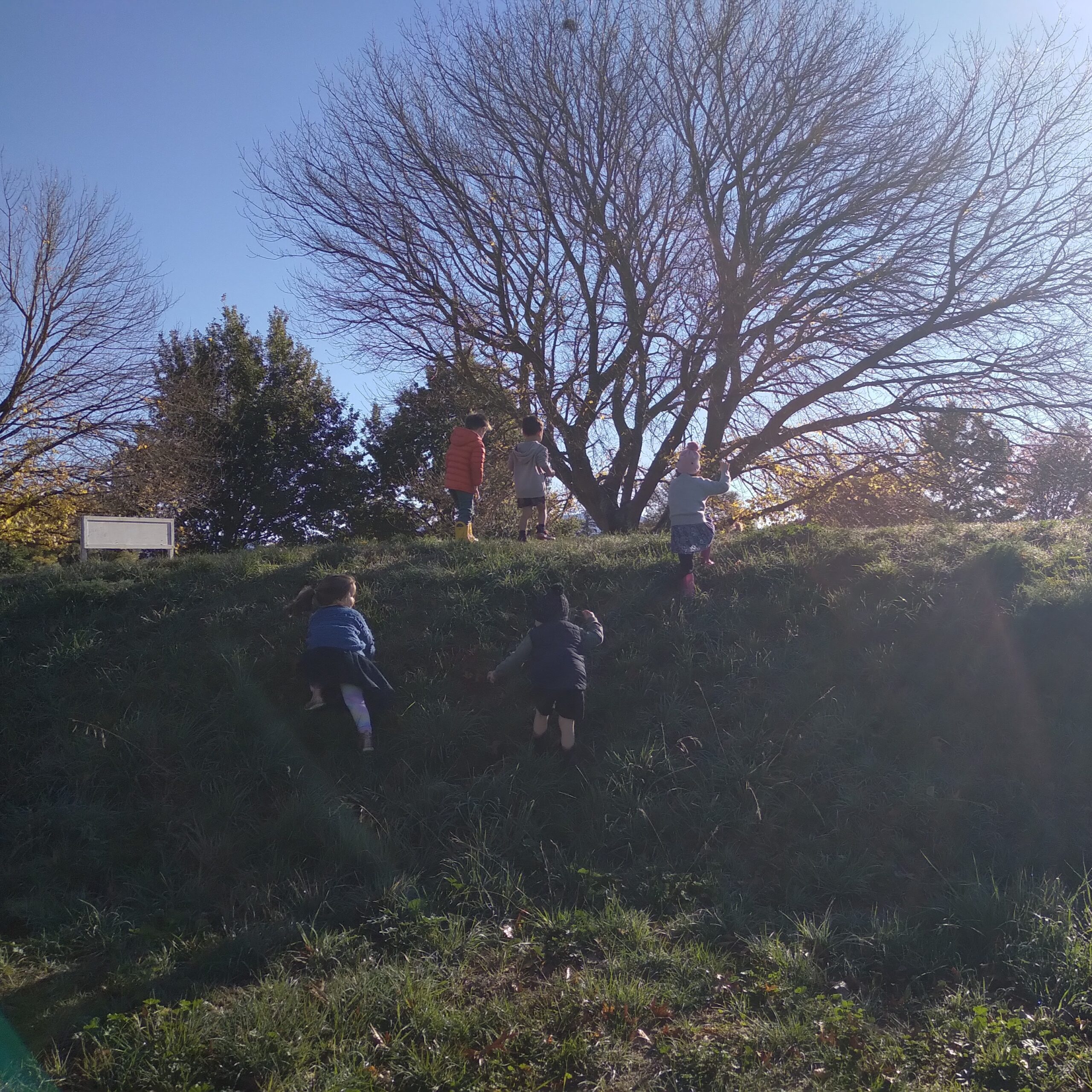Montessori tamariki connect to nature
At Montessori Blenheim, children live and breathe the guiding principle, Kaitiakitanga – Guardianship.
Children see themselves as active global citizens who are responsible for their actions. They engage in sustainable practices and show aroha for Papatūānuku.
This means the children are finding ways to connect with the local community, step into their role as a kaitiaki and recognise themselves as part of the natural world. As they build their sense of belonging and connect with their natural environment, they are learning to show respect for Tāne Māhuta and the Mauri of his ngāhere.

“Just enough people to give it a cuddle” – Cameron
Last month, a group of little Montessori explorers embarked on an exciting adventure at the Taylor River. This excursion connected with the interests, strengths, abilities and preferences of the group.
They started with a boundary walk to identify their space, keeping an eye out for potential dangers. They also used their senses, looking, feeling and noticing their surroundings. A guided sensory experience with a natural object, was next. The children used all of their senses to learn about their acorn, leaf, stick or seed as they looked closely, touched, smelled and listened.
With Tama-nui-te-rā shining brightly, they then ventured out in search of more special treasures, tree-climbing opportunities, bug hunts, and a chance to fully immerse themselves in nature. The outdoor environment provided a sense of freedom and inspiration that sparked their curiosity and instant joy. A range of strategies were used to encourage tamariki exploration, thinking, reasoning and problem solving. This included a variety of provocations such as weaving frames, pencils and paper, colour matching activities, bug collection apparatus and a magnifying glass. They were highly observant and noticed diverse textures, patterns and colours of the leaves, plants, insects and bark. These observations sparked fascinating conversations among the children, as they shared their discoveries and investigative questions with each other.
One child, Cameron noticed a branch that had broken off a huge tree. He commented about the conflict between the “god of the wind (Tawhirimatea) and Tāne Māhuta”. His thought was that they might have been angry with each other and that is why a branch had been ripped off.
Whilst Tilly tossed the leaves into the air and exclaimed, “I have lots of leaves like this at my house.” This led to a conversation about autumn, deciduous and evergreen trees.
“Look what I found!” said Ardie as he picked up a lichen covered twig off the ground.

Alexandria was fascinated with the shapes of the fallen leaves – “this one’s a heart shape”
The free and active exploration allowed the tamariki to fully engage with the environment around them, in their own way. Several discussions were had about the role they have of being a kaitiaki. The responsibility they have for looking after all the living things and the care they have for Papatūānuku.
The tamariki showed a commitment to their role as kaitiaki and were on the lookout for rubbish “that might hurt Papatūānuku’s tummy.” They had lots of conversations about people “not being very responsible”, as they noticed lots of plastic, glass bottles and chippy packets on their walk back to Montessori.
They learnt the whakatauki – ‘Ko ahau te taiao, ko te taiao, ko ahau’ (I am the environment and the environment is me), whilst they were there. This highlighted for the children that they have an important duty and a strong attachment to whenua.
Back at Montessori the group proudly recounted their “adventure” to the Taylor River. This trip not only tapped into the diverse funds of knowledge the children have but also provided a platform for sharing their prior experiences and what they already know about the natural world.
Story provided by Montessori

